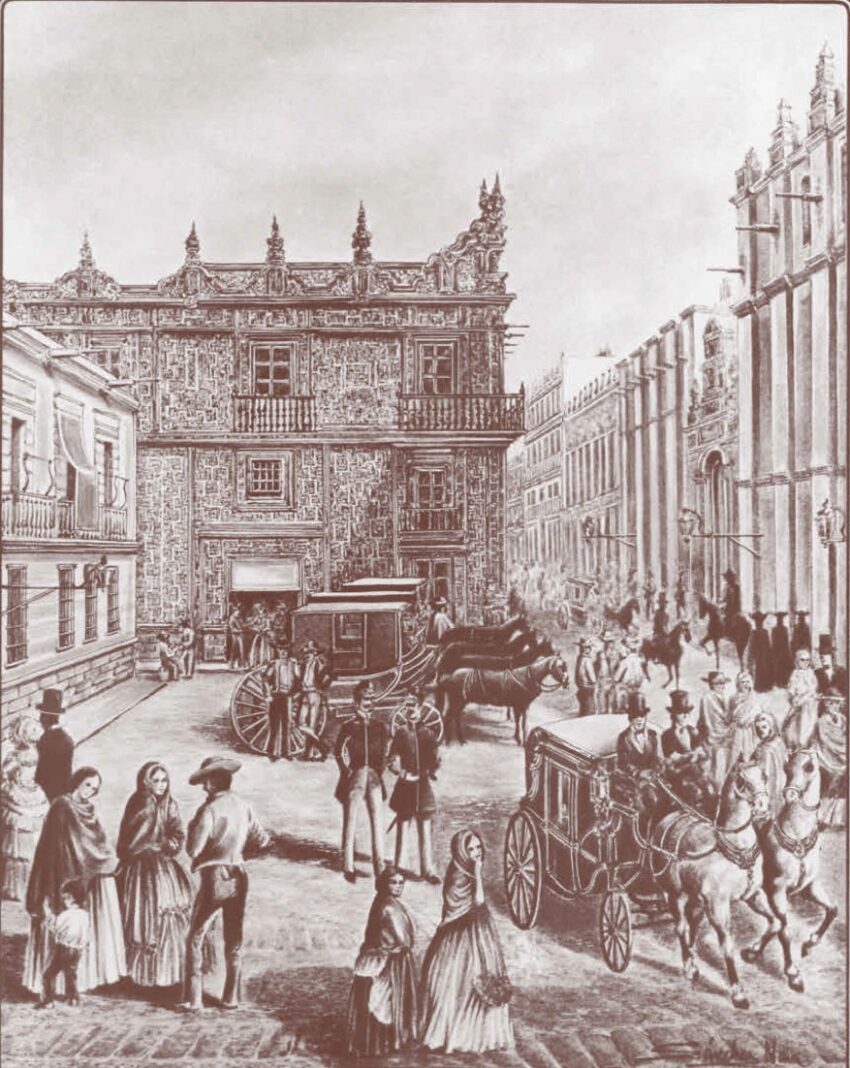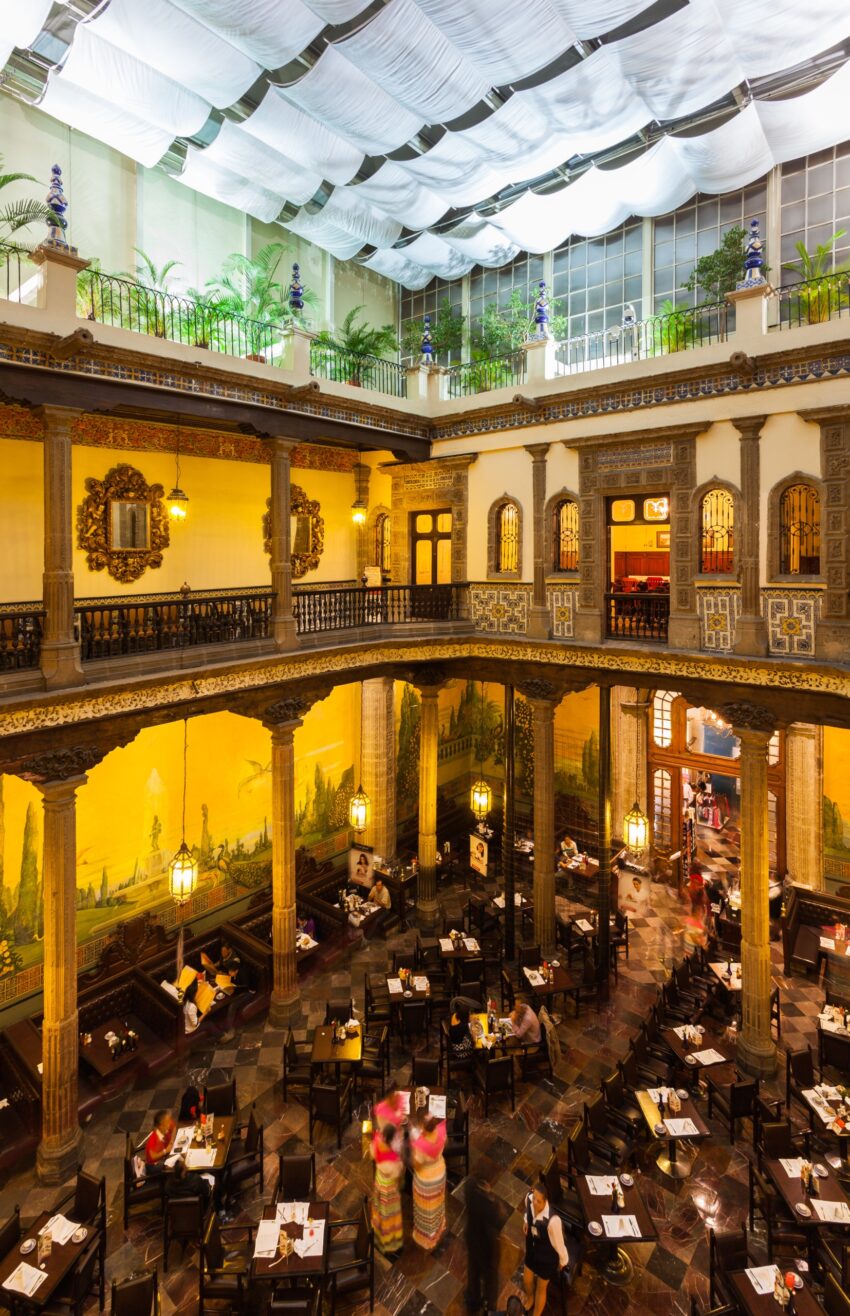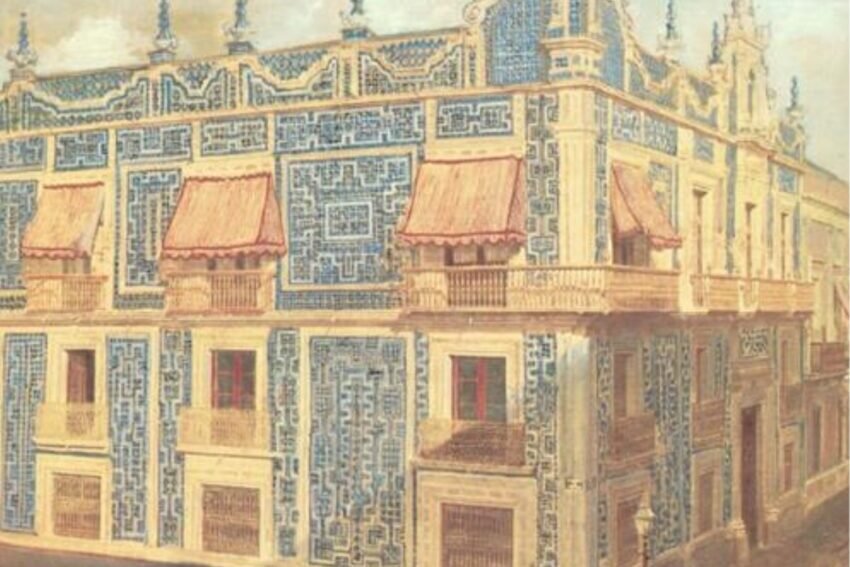The corner of Avenida Francisco Madero and Calle de Condesa in Mexico City’s Historic Center is chaotic. Myriad vendors sell eyeglasses and beggars croon Luis Miguel ballads from portable microphones, and tourists take side profile selfies against a blue-and-white tiled facade, while extended families form a line that snakes down the street. To the naked eye, Casa de los Azulejos seems like nothing more than a typical historic Mexico City establishment — a department store on the inside, a Portuguese-colonial style house on the outside. And in the most literal sense, that’s exactly what it is. To a Mexico City native, however, this coveted location represents so much more than that. This is the flagship Sanborns — Mexico’s iconic department store and its answer to the Herald Square Macy’s. Its story takes us from an immigrant business opportunity to retail’s journey toward modernization in the nation’s capital.
The Sanborn brothers arrive
Brothers Walter and Frank Sanborn arrived in Mexico City from their home state of California in 1903. They soon called upon their entrepreneurial spirit and opened a business. Sanborns American Pharmacy was established on the busy street known today as Calle Tacuba. It’s often called the oldest street in the Americas.

The Sanborns’ focus on community integration influenced the brothers to install a soda fountain in their new pharmacy. Locals could sip on American-style ice cream sodas and, as a result, the small business quickly became a popular gathering place among the capital’s elite and middle classes. By 1919, their hybrid pharmacy-parlor concept had outgrown its original location. The Sanborn brothers faced a decision. Should they take the leap and rent that expensive, blue-tiled 18th-century palace on Avenida Francisco I. Madero, just a few blocks away?
The Casa de los Azulejos: The historic palace that changed everything
Frank and Walter went for it, and Francisco Sergio de Iturbe, the owner of the historic Casa de los Azulejos, agreed to rent them the mansion as a mixed-use space. Despite early criticism over the mansion’s conversion into a commercial business, the store’s opening on Oct. 11, 1919, was a success. At the time, this highly unique blend of retail, leisure, dining and socialization was novel, and Sanborns effectively created what the coffee shop might be for us today. Which is to say, a vital social hub that was neither home nor work.
Mexico City’s intellectual hub
Early journalistic references and scholarly papers report that throughout the 1920s, Sanborns attracted Mexico City’s intellectual and creative society. Salvador Novo, one of Mexico’s most prominent writers, refers to the establishment in his 1946 urban chronicle “Nueva grandeza mexicana”:
“That Sanborns across the way, where we could have eaten, or bought toothpaste, a suit, silver, playing cards, paintings, sweets, laxatives or admired a fresco by Orozco, [which also] is the Palace of the Tiles, whose detailed history was written by the Marquis of San Francisco, and before becoming what it is, once housed a Jockey Club.”
To cement the building’s status as the epitome of elegance, de Iturbe commissioned one of Mexico’s favorite artists, José Clemente Orozco, to adorn the staircase with his talent. Orozco’s mural, known as “Omnisciencia,” turned out to be a pivotal work in the artist’s career. It’s widely recognized as a storyboard of human knowledge, intelligence and inspiration.
How Sanborns redefined Mexican shopping culture
Sanborns established itself early on as a cornerstone of Mexican consumer life. Unlike other establishments in downtown Mexico City, it offered something different. It had access to both retail and hospitality under one roof. By integrating full-service restaurants and coffee shops alongside shelves of daily-use products like books, cosmetics, electronics, clothing and pharmaceuticals, Sanborns blurred the lines between shopping and social experience, attracting both practical buyers and leisure visitors. Moreover, product displays were cutting-edge. Aisles were clean and organized by item type, optimized to capture a browser’s attention.

In the 1940s, Sanborns was acquired by Walgreens Co. (this would be the U.S. company’s first foreign investment) and locations started popping up throughout Mexico City, Puebla and Acapulco. Walgreens sold its shares to Grupo Carso in the mid-1980s, marking the crucial moment that Carlos Slim took over. Slim’s acquisition of Sanborns ignited a phase of aggressive expansion. By 2021, 196 establishments could be found across Mexico in various forms: stand-alone cafes, shopping mall integrations and restaurant-department store fusions.
Sanborns today
Today, Sanborns is adapting to an increasingly virtual world. Digital catalogs and in-store pickup are being incorporated to satisfy digital-savvy shoppers, and improved restaurant service appeals to old and new diners. While a few dozen stores have closed, the company reported 73.4 billion pesos in consolidated revenue for fiscal 2024. Plans to expand 10-15 locations by the end of the year defy Mexico’s inflationary pressures, and Sanborns continues to be one of Slim’s strongest investments.
Visiting Sanborns Casa de los Azulejos: A complete Mexico City experience
The Sanborns restaurant in Casa de los Azulejos remains a must-see for Mexico City visitors. They enter from the door facing Avenida Francisco I. Madero and walk past aisles of puzzles, desk lamps and stationery. The restaurant host still, at the time of writing, scribbles your name into an oversized agenda book and takes you to your seat. Of the three towering stories in the former Countess of Orizaba’s abode, two are dedicated to dining and drinking.
Should you be served by a “samborina,” she’ll arrive at your table dressed in a crisp white blouse, traditional folk-style skirt, a colorful huipil and a small headpiece, all fitted by an in-house seamstress. Ask for the signature dish, enchiladas suizas. These are named not after any European-influenced cooking style but rather for the peaks and valleys of melted cheese that allegedly reminded Walter Sanborn of the Swiss Alps. According to the Sanborns website, La Gastronomía Mexicana recognizes enchiladas suizas as a fundamental element of Mexican cuisine.
Your visit to the Casa de los Azulejos, Mexico’s iconic department store, may feature live music. Depending on the time of year, opulent holiday decor, too. Christmas is an especially exciting time to visit. After breakfast and a Mexican coffee, stroll through the shop’s eclectic variety of items like a local before making your way back outside to the delightful commotion of the Historic Center that never seems to end.
Bethany Platanella is a travel planner and lifestyle writer based in Mexico City. She lives for the dopamine hit that comes directly after booking a plane ticket, exploring local markets, practicing yoga and munching on fresh tortillas. Sign up to receive her Sunday Love Letters to your inbox, peruse her blog or follow her on Instagram.




